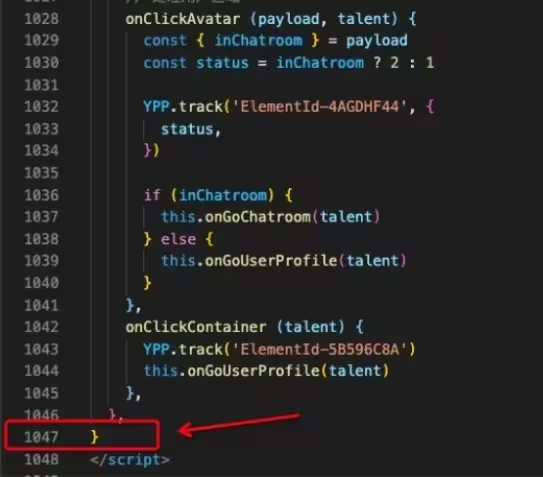作为前端工程师,你应该了解的 10 个 JavaScript 技巧
前言
不知道你有没有和我一样的情况。自己之前辛辛苦苦写的代码,过了一段时间自己再去读,发现写的很是一言难尽。要不是因为知道是自己写的,非得大骂**,简直就是垃圾,自己更是悔不当初。
因此,今天我想跟你分享 10 个关于 JavaScript的小技巧,希望可以帮助你避免编写我曾经写过的垃圾代码。
1.Promise回调地狱
Promise 提供了一种优雅的方式来处理 JavaScript 中的异步操作。这也是避免“回调地狱”的解决方案之一。但我不太明白这是什么意思,所以我写了这段代码。
我做了这些事情:
-
首先获取用户的基本信息。
-
按用户信息获取所有文章的简要摘要。
-
通过文章简要了解文章详情。
// ?
getUserInfo()
.then((userInfo) => {
getArticles(userInfo)
.then((articles) => {
Promise.all(articles.map((article) => getArticleDetail(article)))
.then((articleDetails) => {
console.log(articleDetails)
})
})
})我在这里根本没有利用 Promise。我们应该像下面的代码片段一样处理它:
// ?
getUserInfo()
.then((getArticles)
.then((articles) => {
return Promise.all(articles.map((article) => getArticleDetail(article)))
})
.then((articleDetails) => {
console.log(articleDetails)
})2. 不处理错误消息
我经常只写请求成功的代码逻辑,而忽略请求失败的代码逻辑。
// ?
const getUserInfo = async () => {
try {
const userInfo = await fetch('/api/getUserInfo')
} catch (err) {
}
}这是缺乏经验的做法,我们应该给出一个用户友好的提示,而不是什么也不做。
// ?
const getUserInfo = async () => {
try {
const userInfo = await fetch('/api/getUserInfo')
} catch (err) {
Toast(err.message)
}
}3.为函数设置太多参数。
当一个函数的参数太多时,它的可读性就会降低,甚至让我们不知道如何正确地传递参数。
举个例子:
我们想要获取用户的一些基本信息,比如姓名、性别、年龄等。
// ?
const getUserInfo = (name, age, weight, gender, mobile , nationality, hobby, address) => {
// ...
}
getUserInfo('fatfish', 100, 2000, ...)那太糟了。如果你的同事写出这样的代码,你会殴打他吗?
事实上,当函数参数过多时,应该使用对象来传递所需的信息,这样其可读性和可扩展性就会提高。
// ?
const getUserInfo = (options) => {
const { name, gender, age, mobile, weight, nationality, hobby, address } = options
// ...
}
getUserInfo({
name: 'fatfish',
age: 100,
weight: 2000
// ...
})4.使用幻数
小伙伴们,你们有写过这样的代码吗?很多地方用数字来进行逻辑判断似乎很正常。是的,这让我很困惑 1、2、3 到底是什么意思。
?
// component1.js
if (status === 1 || status === 2) {
// ...
} else if (status === 3) {
// ...
}
// component2.js
if (status === 1 || status === 2) {
// ...
}我们最好将这些数字定义为常量。
// ?
// constants.js
export const STATUS = {
// It is an adult and has real-name authentication
adultRealName: 1,
// It is a minor and has real-name authentication
minorRealName: 2,
// Not real-name authentication
notRealName: 3,
// ...
}
// component1.js
import { STATUS } from './constants.js'
if ([ STATUS.adultRealName, STATUS.minorRealName ].includes(status)) {
// ...
} else if (status === STATUS.notRealName) {
// ...
}
// component2.js
import { STATUS } from './constants.js'
// component2.js
if ([ STATUS.adultRealName, STATUS.minorRealName ].includes(status)) {
// ...
}5.使用.length判断字符串的长度
大多数时候,我们使用.length,判断字符串的长度是安全的,但是在表单输入的情况下要小心使用。
当我们输入 🍫 时,nameLen 的值为 2 — 这不是很奇怪吗?
// ?
<input type="text" id="name">
<script>
const $name = document.getElementById('name')
$name.addEventListener('blur', () => {
const name = $name.value
const nameLen = name.length
// input: fatfish => nameLen: 7
// input: 🍫 => nameLen: 2
console.log(`name: ${name}, nameLen: ${nameLen}`)
}, false)
</script>是的,这是有原因的,你猜怎么着?
// ?
<input type="text" id="name">
<script>
const $name = document.getElementById('name')
$name.addEventListener('blur', () => {
const name = $name.value
const nameLen = name.length
const spRegexp = /[\uD800-\uDBFF][\uDC00-\uDFFF]/g
const nameRealLen = name.replace(spRegexp, '_').length
// input: fatfish => nameLen: 7, nameRealLen: 7
// input: 🍫 => nameLen: 2, nameRealLen: 1
console.log(`name: ${name}, nameLen: ${nameLen}, nameRealLen: ${nameRealLen}`)
}, false)
</script>6.永远不要写代码注释
我们经常向别人抱怨:“你为什么不写代码注释呢?” 但实际上,我从来没有写过!
// ?
const fn = (dpr) => {
if (dpr >= 2) {
// ...
} else {
}
}天哪,你知道“dpr”是什么意思吗?我没想到这意味着窗口设备PixelRatio。
// ?
// dpr: Please enter a value for window.devicePixelRatio
const fn = (dpr) => {
if (dpr >= 2) {
// ...
} else {
}
}7. 无意义的代码注释
与其写无意义的代码注释,还不如不写代码注释,因为它浪费你的时间。
你不妨解释一下“a”的含义或使用有意义的变量名称!
// ?
let a = 1 // Set the value of "a" to 18. 随机命名
过去,我常常编写随机命名变量的尴尬代码片段。
// ?
const mw = 375朋友们,请不要向我学习。你应该给变量一个正确且有意义的名称。
?
const maxWidth = 3759. 不删除已弃用的代码
很多时候,我们的网站会不断调整功能,有新的和废弃的功能,但我总是担心以后会用到它们,所以我只是注释它们,而不是删除它们。
其实这种担心完全没有必要,因为以后用的可能性很小。即使以后要用到,也可以通过‘git’进行追溯。

10. 一千多行组件代码
我在一个组件中编写了一千多行代码。这太糟糕了,我们应该将组件的功能进一步拆分为更小的组件。

本文来自互联网用户投稿,该文观点仅代表作者本人,不代表本站立场。本站仅提供信息存储空间服务,不拥有所有权,不承担相关法律责任。 如若内容造成侵权/违法违规/事实不符,请联系我的编程经验分享网邮箱:veading@qq.com进行投诉反馈,一经查实,立即删除!